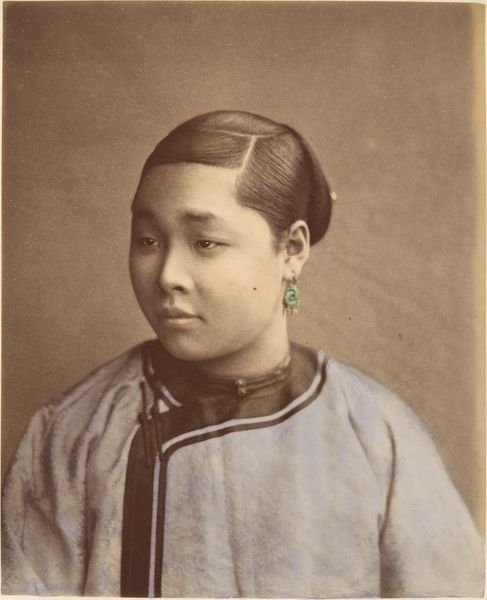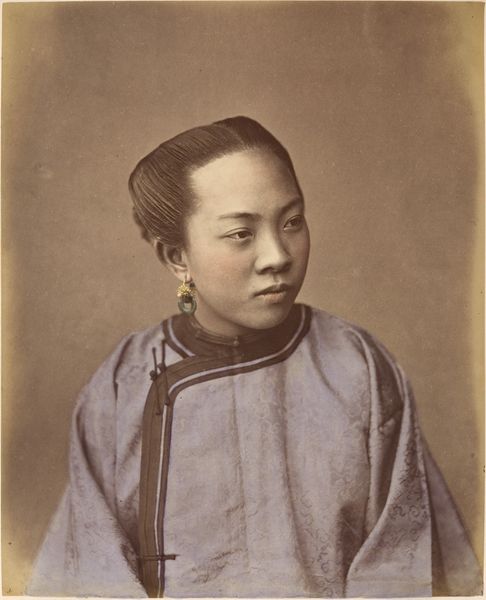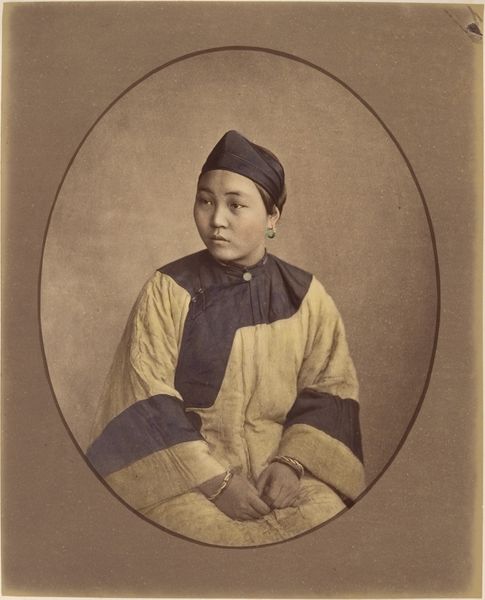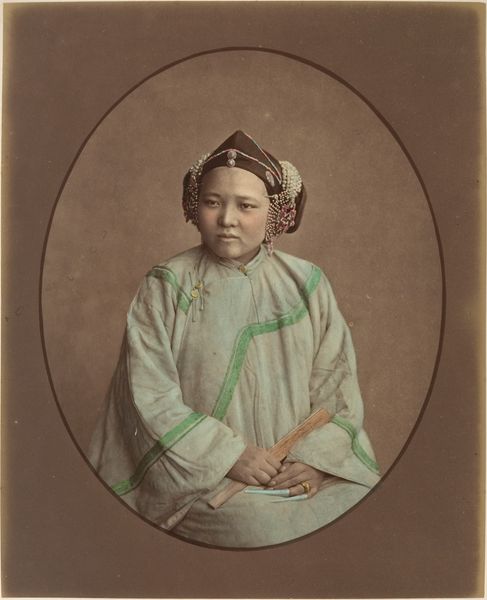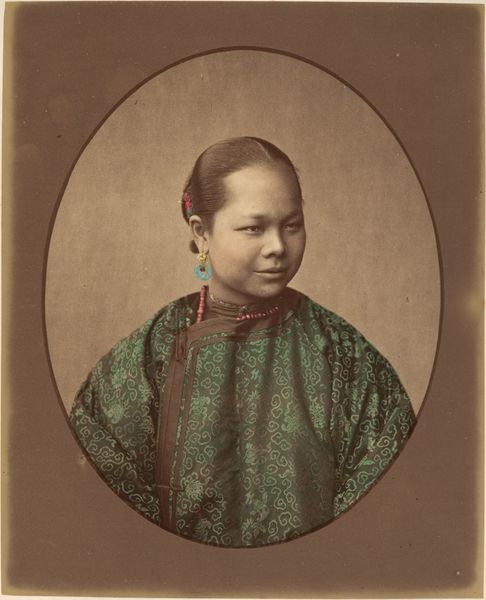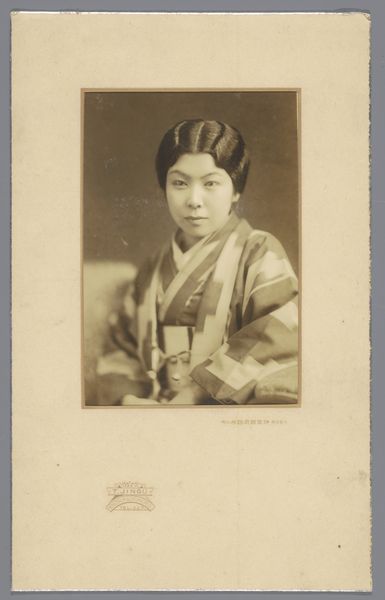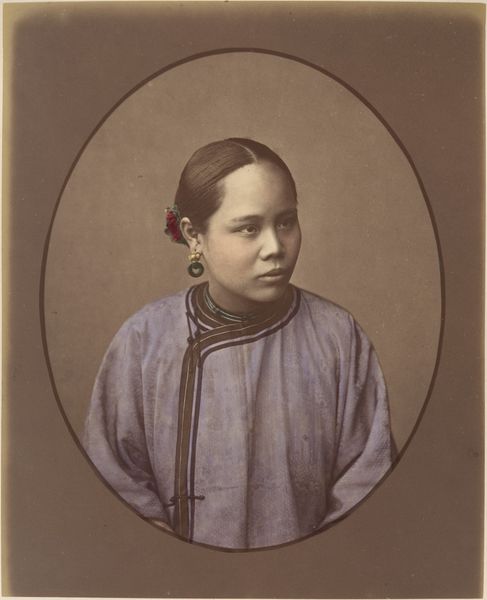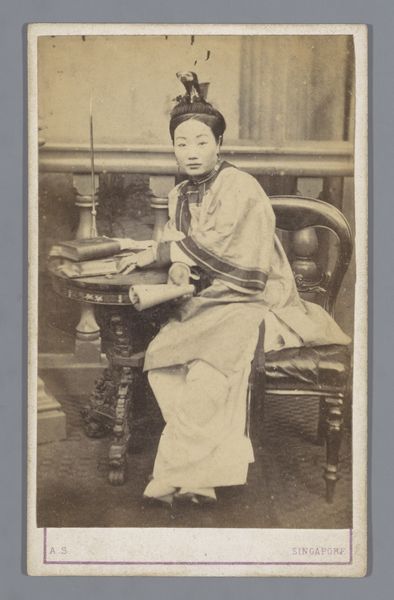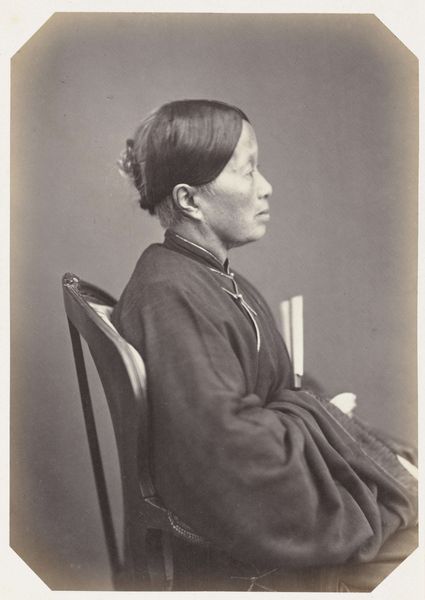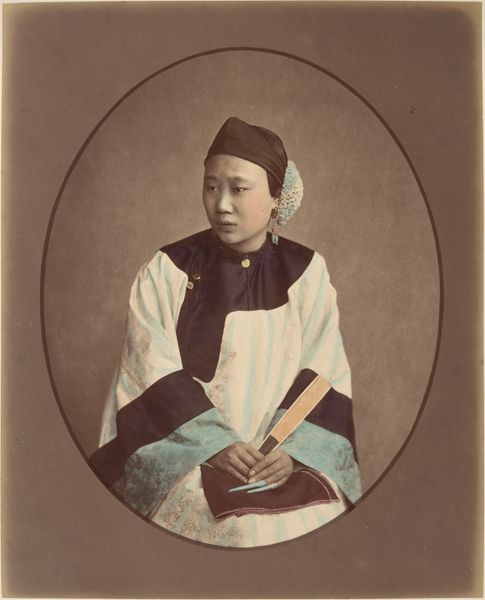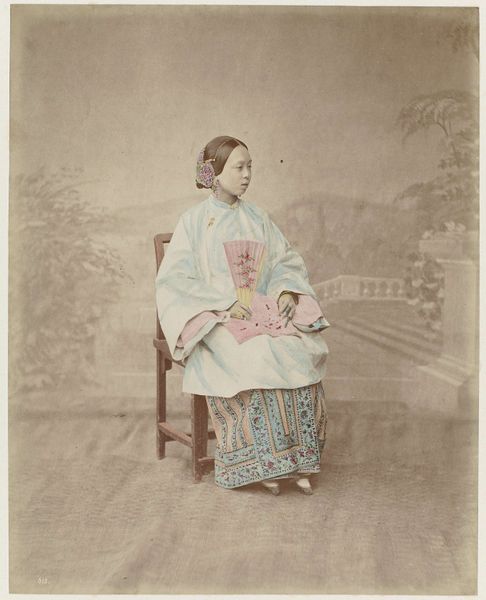
print, photography, albumen-print
#
portrait
#
16_19th-century
#
self-portrait
# print
#
photography
#
historical photography
#
orientalism
#
albumen-print
#
realism
Dimensions: height 171 mm, width 125 mm, height 341 mm, width 269 mm
Copyright: Rijks Museum: Open Domain
Editor: So here we have "Portret van Sen-Diam," an albumen print from 1863 by Philippe Potteau. The direct gaze and slightly melancholic expression of the sitter are striking. How do we interpret this portrait within its historical moment? Curator: Indeed, what does it mean to create this kind of "realistic" depiction, especially considering Potteau was French and his subject appears to be of Asian descent? Let’s think about the colonial context. Orientalism, as Edward Said famously argued, often exoticized and Othered non-Western cultures. Does this image fall into that trap? Does it participate in a power dynamic between the colonizer and the colonized? Editor: It’s definitely something to consider. The subject isn’t identified beyond a name. Were photographs like this displayed back in France? And if so, how did viewers interpret the sitter? Curator: Absolutely. These images were consumed within a framework of European fascination with, and perceived dominance over, the East. Ask yourself, what visual cues contribute to either humanizing the sitter, or potentially exoticizing them for a Western audience? Think about pose, clothing, and the very act of being photographed by a European artist. How might this impact our own understanding, or contribute to certain preconceived notions? Editor: The way you position it highlights how an image can tell more than one story depending on who's looking. It seems the act of capturing the photograph involves more than just a mere depiction, but potentially reifies social and cultural hierarchy. Curator: Exactly. This allows us to engage with how such images contribute to larger discussions surrounding representation, cultural appropriation, and historical narratives about the East. It allows for meaningful discussion of identity within a space governed by cultural domination and its legacies. Editor: It definitely gives me more to think about how we present photography from this era. Curator: It's essential to reflect upon whose perspectives are privileged and whose stories are being told, or untold.
Comments
No comments
Be the first to comment and join the conversation on the ultimate creative platform.
